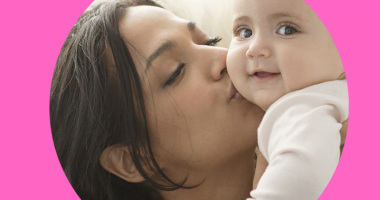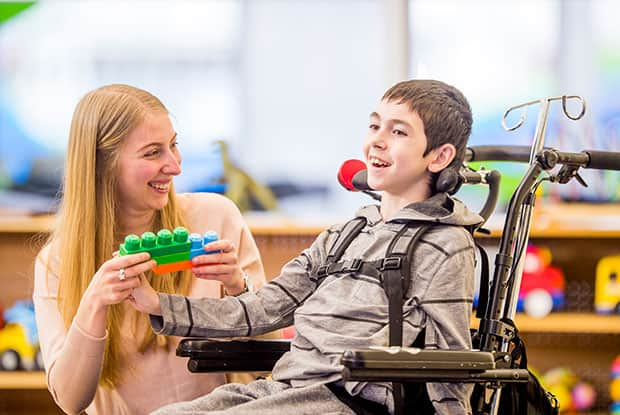Watching your baby sleep can be an amazing experience of early parenthood. Newborns when on rest can take several baby sleeping positions – such as the back, front (stomach), left or right side.
Note: not all baby sleeping positions are considered safe. According to The American Academy of Pediatrics, healthy infants should be placed on their backs for sleep. The back sleeping position is considered the best and safest for infants as it decreases the risk of sudden infant death syndrome (SIDS).

However, putting babies on the back sleeping position does not stop them from rolling to other sleep positions. As a result, moms with newborns are frequently asking the following questions.
What should I do when my baby rolls onto the stomach while sleeping on his back?
Babies begin to roll over onto their stomach from their back around 4 to 5 months of age. What you need to do as a mom is to keep an eye on your baby while he or she is asleep. But before then, place your baby in a comfortable sleeping position where he/she may be able to turn the face to either side freely. A good sleep position helps keep the baby’s mouth and nose free for breathing when sleeping on the stomach. Without any doubt, sleeping on the back is the best sleep position for babies. Thus place your baby on the back when you putting him or her to sleep.
Note: from one to four months of age, the Sudden Infant Death Syndrome risk is at its peak and remains a threat until your baby is one year old. So, be cautious and follow precautions to reduce the risk of SIDS in the first 12 months of your baby’s life.
2. Is it safe for my baby to sleep in fencing reflex while in the back-to-sleep position?
You need not worry if you find your baby sleeping in a fencing reflex. Babies do have reflexes (involuntary movements or actions) as they grow. These movements are a normal activity for newborns and there is absolutely nothing to worry about. Fencing reflex, also known as tonic neck reflex is just one among other normal reflexes you can see in newborn babies.
Here are other normal reflexes found in newborns;
- Rooting reflex
- Suck reflex
- Moro reflex
- Grasp reflex
- Stepping reflex
Fencing position in babies happens when a baby is placed on the back-to-sleep position, and then the baby’s head turns to one side with the arm and leg of that side extended, while the other arm and leg are flexed. This position will help prevent your baby from rolling over onto the stomach before the body is ready for it. As a result of this reason, it’s very good to put your baby to sleep on the back. Usually, this involuntary movement stops within 3 to 6 months after birth.
3. When can my baby sleep on the stomach?
A baby can be put on the stomach once he is four to five months old. Just like the left and right side baby sleeping positions, be certain your baby is awake before putting him/her on the stomach and keep close monitoring.
Create a flexible tummy time for your baby. 20 to 30 minutes tummy time a day should be aimed at. Tummy time helps to strengthen the stomach, back, and neck muscles of babies.
A study by Dr. Karen Sokal-Gutierrez showed that Sudden Infant Death Syndrome (SIDS) risk is lowered with babies spending more tummy time when they are awake. Moreover, the baby would develop upper body strength needed to lift the head and roll over in sleep.
4. Can a baby sleep on his side at 4 months?
No! At four-month-old, a baby should always be placed on his or her back to sleep, not on the side or even stomach. Putting a baby on the right or left side sleeping position when asleep can increase the chances of SIDS.
5. Can I use infant sleep positioners for my baby?
Infant sleep positioners are NEVER US FDA approved. Using any to hold an infant on his or her back for sleep is dangerous and unnecessary.
According to Very Well Family,
“instead of sleep positioners to make babies safer, they are a suffocation hazard that has been linked to more than a dozen infant deaths and even more consumer complaints”.
Furthermore, NEVER put pillows, blankets, loose sheets, comforters, or quilts under a baby or in a crib – this act is not healthy for babies.
6. What if babies throw up when sleeping on the back?
Most babies throw up from time to time and even while on the back sleep position. The risk for healthy babies to choke on vomit when made to sleep on the back than on the side or tummy is very low.
Sleeping on the back does not increase choking risk in babies including babies with gastroesophageal reflux disease. Choking in babies can easily happen when they are put on their backs on bed with a bottle propped for feeding. This practice could go further to cause ear infections in babies.
7. What can I do if my baby has difficulty sleeping on the back?
You need to understand that not every infant gets a good deep sleep while sleeping on the back. As a matter of fact, a number of babies may become fussy when placed on the back to sleep. In most cases, babies with a congested nose usually do not feel comfortable with sleeping on the back position. In situations like this, place a humidifier in your baby’s room to moisten the air and loosen the congestion. Raising your baby’s head slightly could reduce the discomfort from a stuffy nose.
8. What if my baby throws up while sleeping?
There is nothing to worry about if your baby throws up while sleeping. Babies vomit at intervals. In a case like this, temporarily place him/her on another sleeping space, clean up the vomit and change the bedding. Afterwhich, put your baby back to his/her sleep bed.
9. What are the best sleeping positions for preterm babies?
According to a research study, sleeping on the back position(Supine) is recommended for newborns including preterm babies. It helps to prevent Sudden Infant Death Syndrome (SIDS). Preterm babies are at increased risk for SIDS, which may worsen if they are placed to sleep on the stomach(prone). However, in a highly monitored careful setting, sleep on stomach position may be recommended for babies with acute respiratory diseases including sleep apnea.
10. Can I reposition my baby while sleeping?
Yes, you can reposition your baby when asleep or awake during activities. Repositioning is very important as it keeps your baby from always resting on the same body area. It allows for a more even distribution of your baby’s head weight and helps to prevent flat spots. Changing your baby’s head positions also helps strengthen the muscles in the neck. This practice is very crucial for newborns especially as babies begin to hold up their heads and sit up on their own.
Conclusion
Babies’ sleeping positions can either keep them safe or harm them. The best baby sleeping positions for both preterm and full-term infants is sleeping on the back unless directed otherwise by a doctor due to some medical conditions. Sleeping on the back prevents the risk of SIDS in babies, especially in newborns under 12 months of age.









